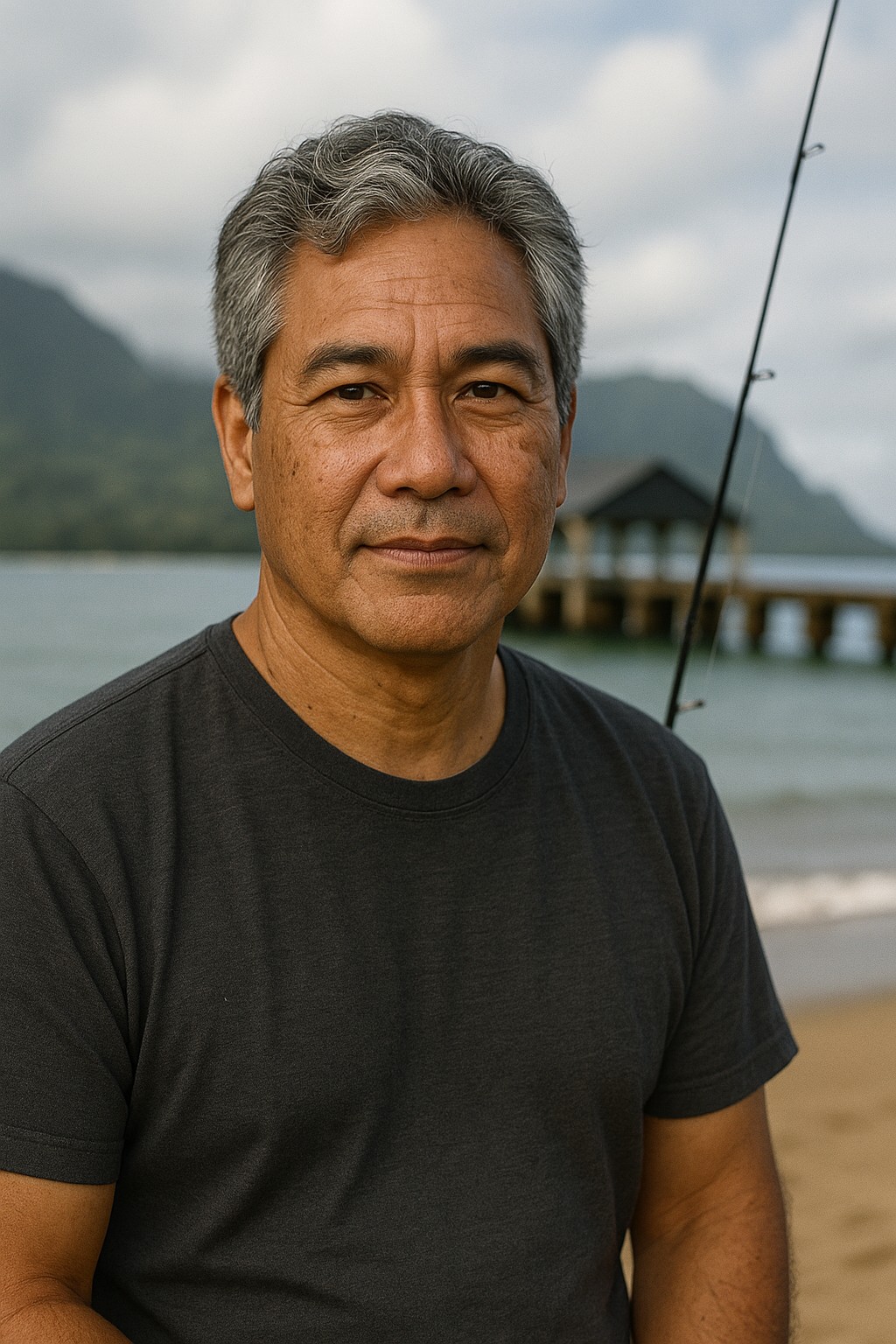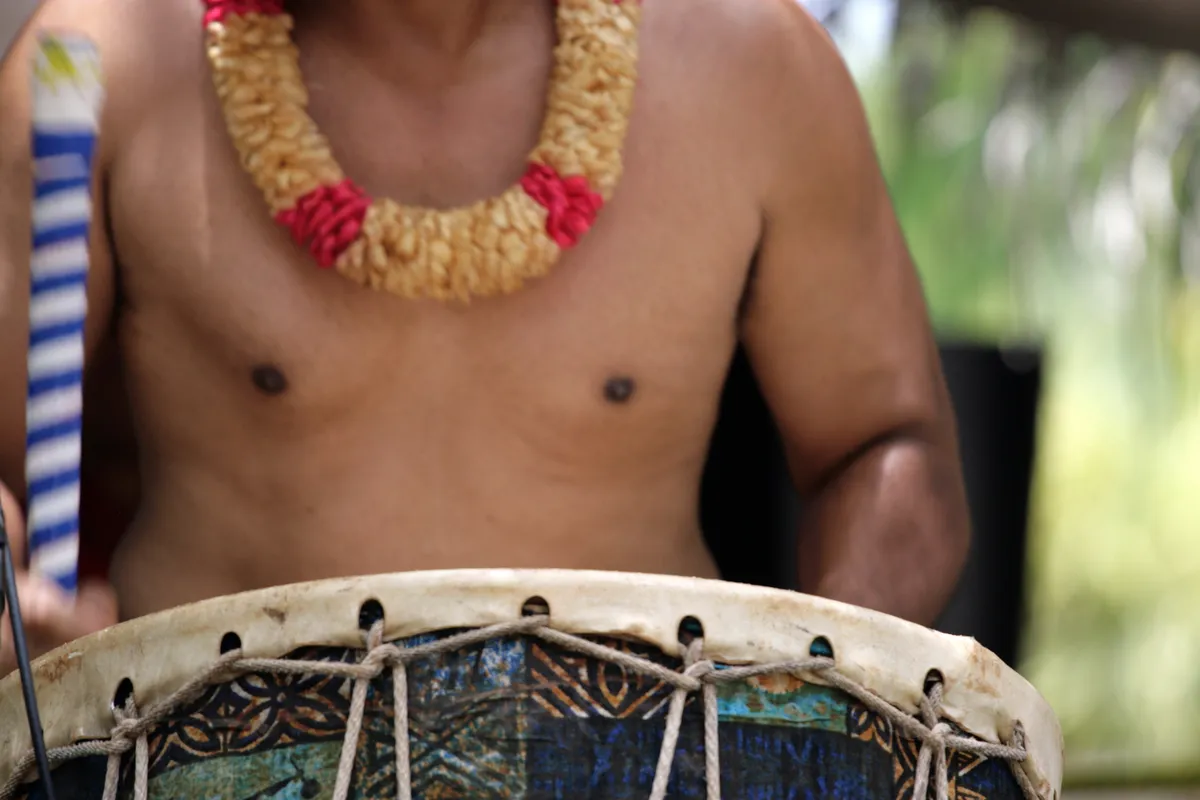

Na Leo o ka ʻĀina
The Voice of the Land - A Journey Through Hawaiian Music

Written by a Cultural Expert
Kalani MillerA Voice Carried on the Trade Winds

The morning mist was still lifting from the Hanalei mountains when I first heard it. A voice carried on the trade winds, chanting in a rhythm that seemed older than the lava rock beneath my feet. My papa stopped our walk and held up his hand. "Listen, Kalani," he whispered. "That's Mrs. Nakamura practicing her oli. She's asking permission to enter the sacred grove."
That moment changed everything for me. I realized Hawaiian music wasn't just songs you heard at lūʻau or on the radio. It was a living, breathing conversation between our people and the ʻāina itself.
Now, thirty years later, I'm still learning that same lesson. Last month, I watched my daughter Kiele instinctively sway to the rhythm of waves against the reef. She doesn't know it yet, but she's already dancing to the heartbeat of Hawaiʻi.
Hawaiian music has never been just entertainment. For over a century, it's been our way to grieve, resist, and demand justice. Our songs carry the weight of our struggles and the strength of our survival.
The Sacred Foundation: When Words Held the Power of Creation
Before there were books or written records, our ancestors carried their entire world in their voices. Every genealogy, every prayer, every piece of wisdom lived in the sacred space between breath and sound. This wasn't just singing. This was survival.
The old ones called it "Mana i ka leo" - power in the voice. A single mistake in a genealogical chant could bring disaster. A prayer spoken incorrectly might anger the gods. The haku mele, our master chanters, held the responsibility of keeping our culture alive with nothing but memory and mana.
🎵 Oli (Chant)
Ancient chants that connect us to everything sacred - still heard at authentic Hawaiian gatherings as living protocol.
🥁 Pahu (Sacred Drum)
Living vessels for the gods, brought from Tahiti in 1200 A.D. - considered to have their own spiritual voice.
🎶 Mele (Song)
Stories in song form - from genealogies to love songs, each with its own proper vocal style and purpose.
🥥 Ipu (Gourd Drum)
Earth-born instruments that provide foundational rhythm for hula kahiko - direct connection to the ʻāina.
Explore Hawaiian Music Traditions
Journey through the evolution of Hawaiian music from ancient chants to modern melodies - discover the voices that shaped our islands.
ℹ️ Quick Info
- Origin: 1000+ years ago
- Sacred Elements: Oli, Mele, Pahu
- Language: ʻŌlelo Hawaiʻi
- Cultural Role: Preservation
🎵 Traditional Instruments
- Pahu (Sacred Drum)
- Ipu (Gourd Drum)
- Kīkākila (Steel Guitar)
- ʻUkulele
- Kī Hōʻalu (Slack Key)
🎶 Sacred Chant Types
Royal genealogies
Name/honor songs
Prayer chants
Love songs
Oli and Mele: The Heartbeat of Memory
Walk into any authentic Hawaiian gathering today and you'll still hear oli - the ancient chants that connect us to everything sacred. These aren't museum pieces. They're living protocol.
When I visit my kumu hula's hālau, I always pause at the threshold to chant oli kāhea, asking permission to enter. Only when I hear the responding oli komo can I step inside. This isn't ceremony for ceremony's sake. It's respect made audible.
The different types of mele tell the story of our people. Mele koʻihonua traced royal lineages back to the gods themselves. Mele inoa celebrated great deeds and honored individuals. Mele kanikau mourned our losses. Mele hoʻoipoipo spoke of love in all its forms.
Each had its own vocal style. The rapid kepakepa for long genealogies. The melodic hoʻāeāe for love songs. The joyful olioli for celebration. The powerful kāhoahoa for proclamations. Every emotion, every purpose had its proper voice.
I saw this power firsthand during the protests at Sherwood Forest in Waimanalo. Activists chanted mele pule to protect iwi kūpuna - ancestral remains - from development. Their voices rose above the construction noise, claiming sacred space with the same authority their ancestors used centuries ago.
The Sacred Drums: Voices of the Gods
The pahu drum arrived in Hawaiʻi around 1200 A.D. with Chief Laʻamaikahiki from Tahiti. He brought his sacred drum, Hawea, and with it, a tradition that would pulse through our islands for generations.
Originally, the pahu lived only in the heiau, our stone temples. The drum was considered a living vessel for the gods, speaking through its leo (voice) from its waha (mouth). When the kapu system ended in 1819 and the temples were destroyed, families secretly kept the tradition alive.
Pahu Drum
Sacred coconut wood drums with spiritual piko (navel) inside - living vessels for the gods' voices.
Ipu Gourd
Earth-born instruments providing foundational rhythm for hula kahiko - direct connection to ʻāina.
My friend Uncle Kala Williams, a master drum maker on the Big Island, puts his own mana into every pahu he creates. He chooses coconut wood from trees that grew near the ocean, believing the constant sway in the trade winds makes them stronger. The hollowed log becomes a resonance chamber, with a crucial septum inside that he calls the drum's piko - its spiritual navel.
The ipu gourd drum provides another essential voice. The ipu hula uses a single large gourd, while the ipu heke joins two gourds together. These instruments connect us directly to the ʻāina, being products of the earth itself. Played by slapping with the palm and tapping with fingers, sometimes thumped on the ground, the ipu provides the foundational rhythm for hula kahiko.

